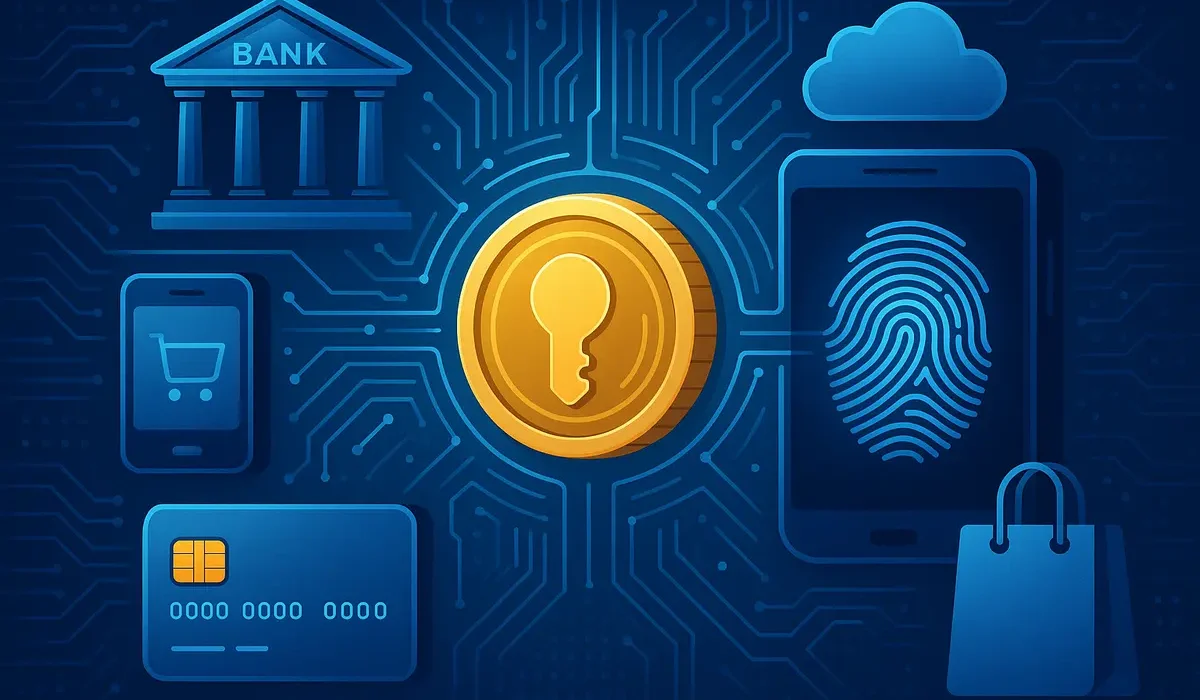Embedding Finance with Tokenization & Biometrics
1. Why Tokenization & Biometrics Matter in Embedded Finance
Embedded finance—integrating financial services directly into non-financial platforms—is projected to reach $7 trillion by 2026, according to market forecasts. As this rapid expansion unfolds, securing data and maintaining frictionless user experience are critical. Tokenization and biometrics jointly provide the trust layer needed to enable secure, seamless embedded payments.
2. The Tokenization Revolution
What Is Tokenization?
Tokenization replaces sensitive payment information (like PANs) with unique, non-sensitive tokens. These tokens are transaction-specific and meaningless if intercepted—boosting security and reducing PCI-DSS compliance scope.
Why It’s Accelerating in 2025
Network mandates: Mastercard is requiring token usage in MENA and aims for full e‑commerce tokenization globally by 2030.
Embedded use cases: Tokenization enables virtual cards and wallets embedded in apps, wearables, and IoT devices—driving wallet-enabled UX.
Asset tokenization boom: Tokenizing assets—from equities to real estate—has scaled to $50 billion in on‑chain RWAs, with projections into the trillions by 2030.
3. Biometrics: Enabling Secure Seamlessness
Biometric Authentication in Payments
Biometrics—such as fingerprint, face, and behavioral traits—enable secure identity confirmation without passwords or PINs. EMV biometric cards are in pilot programs by Mastercard and Visa in regions like South Africa and Europe.
Emerging Standards
Biometric tokenization systems store biometric data securely and use tokens for verification—minimizing exposure of personal data.
Demands, Demands and More Demands
Visa lists biometrics, invisible payments, and fraud innovation among its top three “2025 payment trends”—creating a frictionless experience in embedded finance
4. Synergy in Embedded Finance
Tokenization and biometrics together create a foundation for embedded finance that is:
Secure: Tokenized data avoids exposing sensitive credentials; biometric authentication ensures strong identity verification.
Frictionless: Consumers authorize transactions with a touch or glance—no manual steps required.
Composable: Functions as part of orchestration platforms (like TTRPay) across gateways and services.
Versatile: Supports in-app purchases, wearables, IoT payments, BNPL, and real-time settlement.
5. Real-World Momentum
Visa insights: Recognizes A2A payments, tokenization, biometrics, and real-time payments as top trends driving embedded finance decta.com+1PYMNTS.com+1WikipediaVisa Navigate.
Checkout.com & WNS forecasts: Rank tokenization and biometric security among the top innovations disrupting fintech in 2025
Your payment orchestration layer is ideally suited to integrate tokenization and biometrics:
| Service | TTRPay Capability |
|---|---|
| Token Vault | Issue and rotate secure tokens for card and account data |
| Biometric Gateway | Integrate mobile authentication and EMV biometric cards |
| Dual Security Flow | Combine token and biometric layers for high-risk PAYG validation |
| Embedded Payment Engine | Streamline in-app purchases, wearables, BNPL, IoT automation |
7. TTRPay's Strategic Roadmap
Launch tokenization-as-a-service with SDKs for mobile and IoT developers.
Deploy biometric orchestration via SDKs and EMV biometric card support.
Implement dual-control pilots (e.g., high-value P2P with token + biometric checks).
Create thought leadership—whitepapers/webinars on embedded finance security.
Build industry partnerships with card networks, token providers, and wearable platforms.
Tokenization and biometrics are rapidly becoming foundational technologies in embedded finance. They offer unmatched security and user experience, reducing fraud while creating seamless payment flows in everyday contexts.
TTRPay is uniquely positioned to lead this transformation—offering orchestration capabilities that simplify token issuance, biometric validation, and frictionless embedded experiences across industries. Let’s build the future of secure, embedded finance together.

